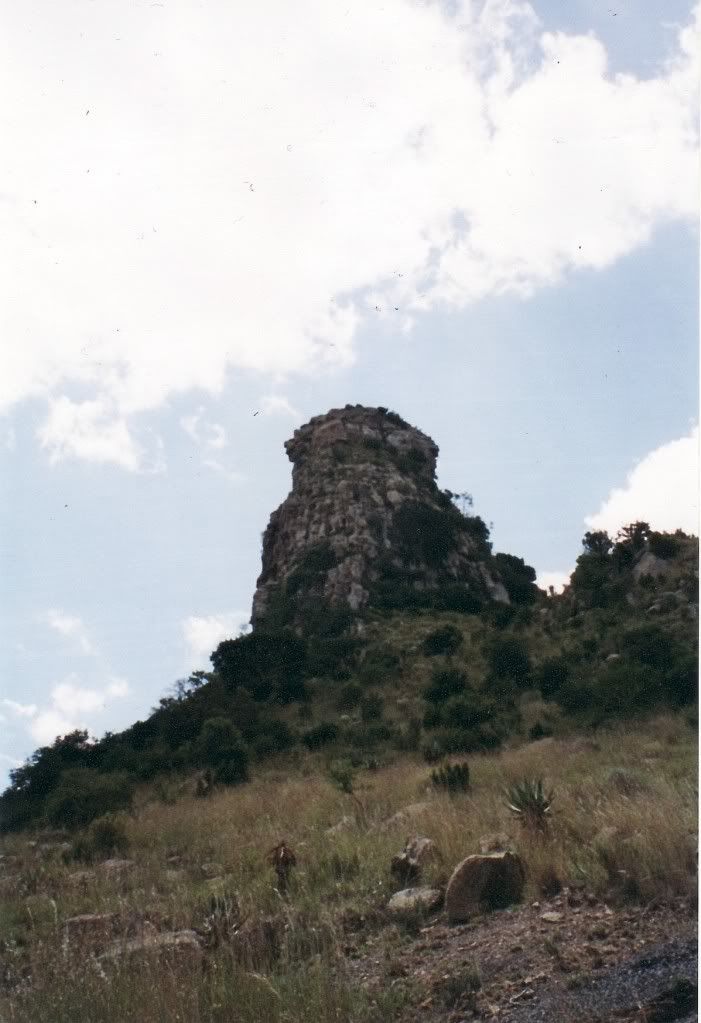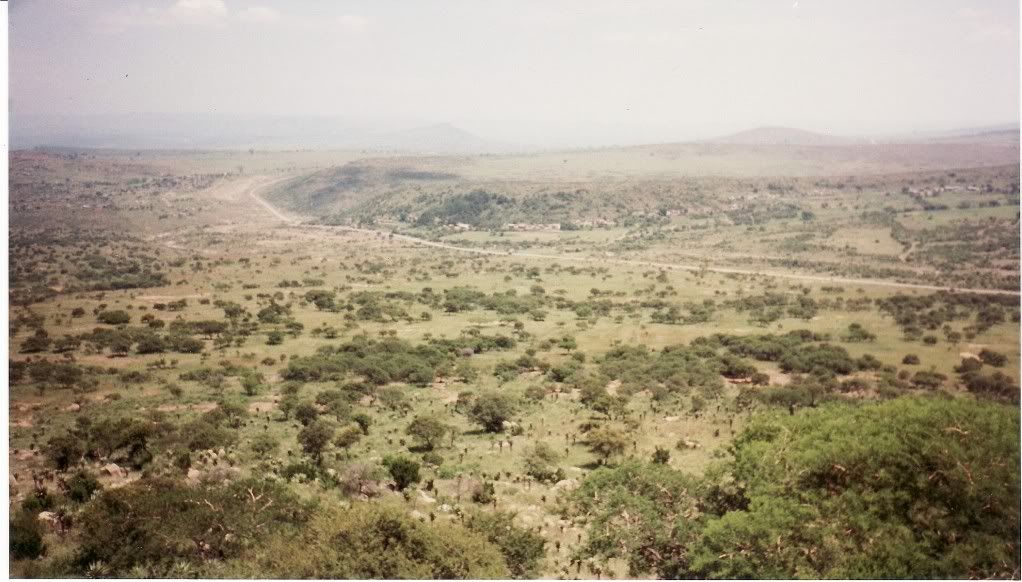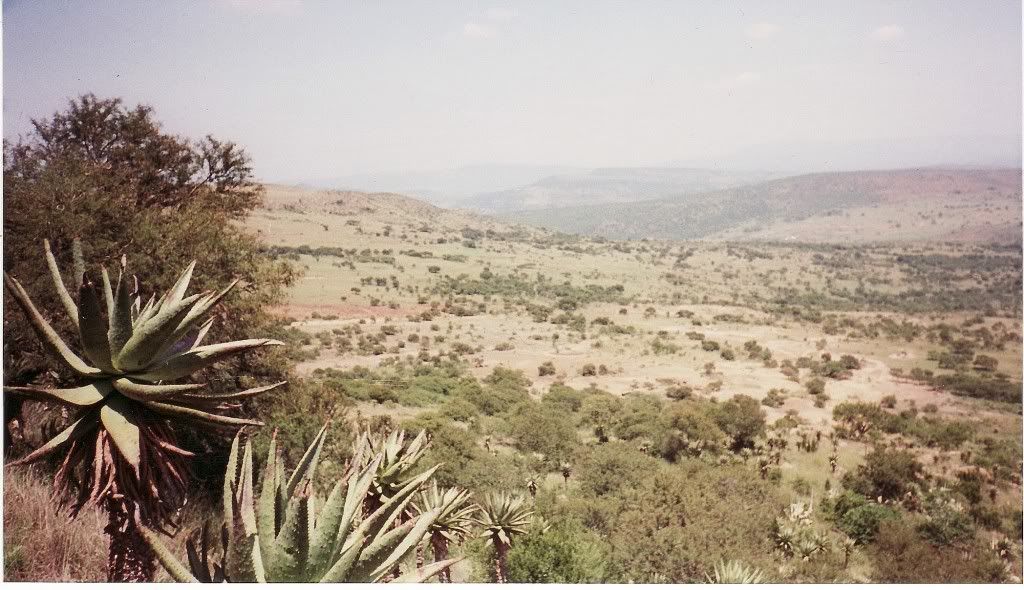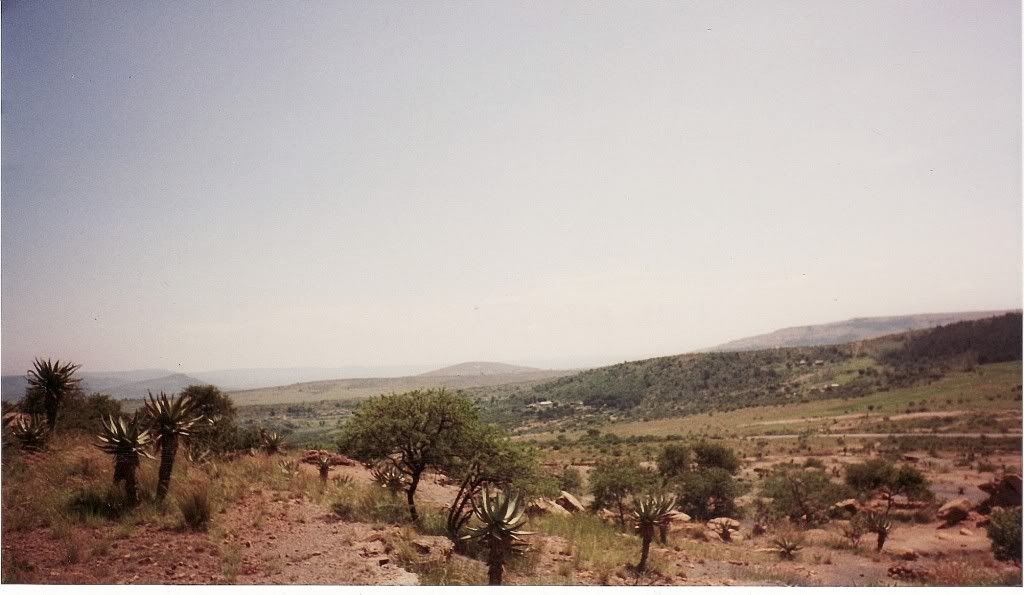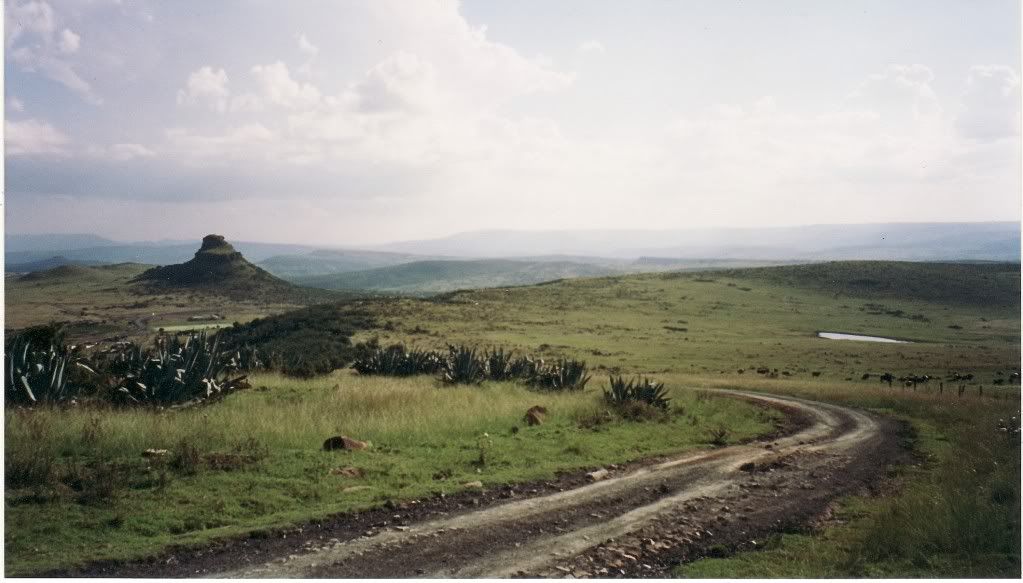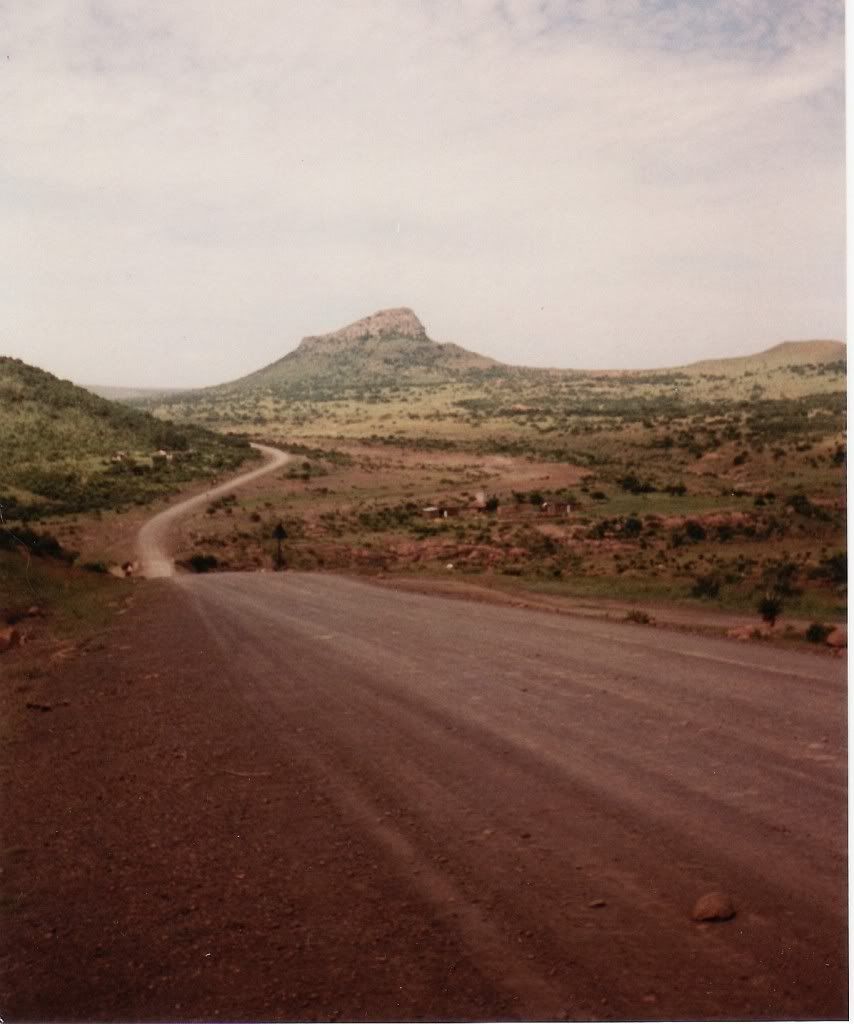 |
|
Jamie
|
http://www.isandlwana1879.co.uk/index_files/Page4209.htm
Try these for the West side of Isandlwana guys! Jamie |
||||||||||||
|
_________________ www.isandlwana1879.co.uk |
|||||||||||||
|
Mark Hobson
|
Alan
Just forwarded some extra pics as promised. Hope you can post them OK. Mark Hobson |
||||||||||||
|
|
|||||||||||||
|
Mark Hobson
|
Hope the above photos give Coll - and anyone else - an idea of the nature of the terrain west of Isandlwana.
Thanks to Alan for his technical help! I should just say that they were taken on a 2002 tour with an APS camera - before I invested in a digital camera!! |
||||||||||||
|
|
|||||||||||||
|
Coll
Guest
|
Mark/Jamie/Alan
Thanks very much for adding the images. Coll |
||||||||||||
|
|
|||||||||||||
|
rich
|
And I'll second that...these pictures are great to get the topography of the site...
|
||||||||||||
|
_________________ Rich |
|||||||||||||
|
Peter Quantrill
Guest
|
|||||||||||||
|
|
|||||||||||||
|
Coll
Guest
|
Peter Q.
As an amateur, I'd say it looks about right, or as near as. Do you know if any metal-detectors have been used around this area for any sort of metallic remnants from the Rocket Battery and crew, or cartridge cases from Nourse and his few men nearby, who were holding out against the Zulu vanguard ? Coll |
||||||||||||
|
|
|||||||||||||
|
rich
|
Peter Q...
For someone who has never seen for himself the topography of the area, that pix above just helps me out tremendously to get the lie of the battle. Just great. Thanks. |
||||||||||||
|
_________________ Rich |
|||||||||||||
|
rich
|
Peter Q...
For someone who has never seen for himself the topography of the area, that pix above just helps me out tremendously to get the lie of the battle. Just great. Thanks. |
||||||||||||
|
_________________ Rich |
|||||||||||||
|
Peter Ewart
|
The area - even in which the approximate vicinity of the rocket battery's demise can be construed - is so vast that you'd need to know more or less where it was stopped for it to be worth getting the detector out, I'd have thought.
There can be no doubt that the whole site of the rocket battery was picked over pretty thoroughly by local inhabitants from 1879 onwards. Presumably only metal & bones would have had any resistance to the annual grass fires, but after a while even these items would gradually diminish, although no doubt a rusty bit of metal would still register. One Sunday morning in 1880, during a grass fire (so presumably around August) one of the unfired rockets burst into life when prompted by the fire. It shot off noisily westward and reached the new mission, situated NE of the former British camp site (roughly where St Vincent is now) disturbing the service being held in a grass hut. The congregation ran for their lives and wouldn't stop running, while Charles & Margaret Johnson put out the fire. Paul Naish's superb photo above (Hi Paul) shows how far the destroyed rocket battery was from the mission. Even if the site of the battery was not quite exact in the photo, it seems a very long way to me (surely further than it could be fired by the contraption when working?) so I would presume the rocket itself had been messed around with (and moved some distance westwards) by local inhabitants between 22 Jan 1879 and the Sunday in 1880 when it suddenly went off. Unless, of course, it had a much longer reach than I'd imagined. Peter |
||||||||||||
|
|
|||||||||||||
|
rich
|
The area - even in which the approximate vicinity of the rocket battery's demise can be construed - is so vast that you'd need to know more or less where it was stopped for it to be worth getting the detector out, I'd have thought.
Taking in a view like this, it makes you think of Lord C's and the general staff's calculation of defense when coming into Zulu territory. They went in there like, to paraphrase Mark Twain, "with the calm confidence of a Christian with four aces" under that sky. And btw can you go about with a detector out there? I figure it's a big no-no. |
||||||||||||
|
_________________ Rich |
|||||||||||||
|
Coll
Guest
|
Rich
To use a metal-detector would need special permission, much like the archaelogy team must have acquired during the Ian Knight and Tony Pollard documentary. There is a machine used in 'Time Team, regularly, 'Geo-Phys'(?) which can be run over the ground to spot anomalies, layer-displacement, etc., though it is used more for larger searches - graves, buildings, walls, moats, etc., in use by police teams too, but I think the ground needs to be reasonably level. I suggested the latter should be used in an attempt to locate the Isandlwana camp, but erosion of the ground will have taken away any signs after all these years. I mentioned metal-detectors, as rather than an educated guess on the Rocket Battery location, any findings by the former could assist somewhat. Coll |
||||||||||||
|
|
|||||||||||||
|
rich
|
To use a metal-detector would need special permission, much like the archaelogy team must have acquired during the Ian Knight and Tony Pollard documentary.
Yes, I thought so. It would probably be chaos if every Tom and Harry went out there hunting over the ground. And regarding Messrs. Pollard and Knight's archaeological work there on the Isandhlwana site, did they ever happen to put that in book form? I'd like to read over their findings. And I'm intrigued if the site has given up all is secrets. I'd think in the case of metal detectors as they get much more sophisticated and powerful to discriminate objects more finds could possibly be unearthed especially those for one reason are the other are deep below ground after all the years. |
||||||||||||
|
_________________ Rich |
|||||||||||||
|
Coll
Guest
|
As the Rocket Battery was a distance away from the camp and quite isolated, there is the chance, albeit slim, that metal items, cartridge cases, have been missed.
Nourse and his few men fought from cover, so cartridge cases, even a few, may have worked their way between rocks, perhaps in the same way of some maybe found at Hlobane and the likes. If Nourse's position could be identified, knowing he was behind the Rocket Battery, finding cases could show not only where they fought, but in what direction they were shooting. Finding any metallic remnants of the Rocket Battery would then be searched for nearer to the notch than Nourse's men, who would initially have been following the same path as Maj. Russell. Either way, it may help pin down its approximate position to a smaller area. I was informed, after enquiring about the whereabouts Maj. Russell was buried, that it is quite likely his remains were removed to a location nearer the camp and other cairns, rather than where he fell. I'm not overly convinced of this, as Maj. Smith was buried where he lay, as was Melvill and Coghill, instead of transferred elsewhere, even though they were a distance from the main battlefield. However, that's just my opinion, as I haven't read any burial details about Maj. Russell. Coll |
||||||||||||
|
|
|||||||||||||
| Long view |
|
||

|
Powered by phpBB © 2001-2004 phpBB Group
phpBB Style created by phpBBStyles.com and distributed by Styles Database.
phpBB Style created by phpBBStyles.com and distributed by Styles Database.

